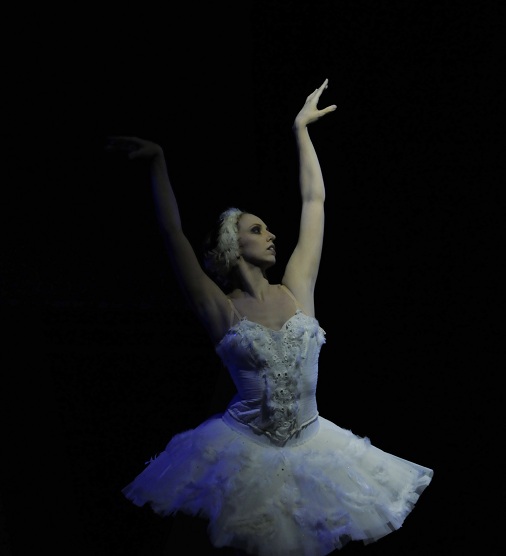La Scala dancer fired after speaking out about anorexia.
By Rebecca Martin.
As a ballet dancer, the pressure is always on. Get your legs up, turn more, jump higher, be thinner, be stronger, turn out, rehearse harder. We look at ourselves in full length mirrors in the studio wearing next to nothing and criticise every arm, leg, foot, and miniscule bulge. For dancers, there is no such thing as perfection, so the quest is endless. Add to that the pressure of teachers and directors and the desire to get a certain part or role.
It’s no surprise then, that young dancers – particularly students – are susceptible to eating disorders. They often think that if they are thinner, they will be better or more successful. If they are thinner, they will get cast in the lead role. If they are thinner, no one will notice their bad feet or their height. Female dancers need to look a certain way and maintain a comparatively lower body weight than non-dancers, not only for the aesthetic of the art form, but for the safety of the male dancers who have to partner them.
However, dancers need to eat. With punishing rehearsal schedules and endless shows, if they don’t eat, they won’t be strong enough to perform at their peak. Dancers certainly need to monitor what they eat, but mainly for overall health and peak performance. It’s like the old adage of putting fuel in the car. If you don’t put fuel in, the car won’t start. If you put the wrong fuel in, performance will be sub-par.

Ballerina Mariafrancesca Garritano
So, unhealthy thought patterns about weight and eating is not unexpected and definitely not uncommon in the dance world. Teachers need to foster healthy body image and eating habits so that students can develop into well adjusted dancers. Unfortunately, this isn’t always the case. During my time at a full time ballet school, some of the girls in my class were told on a Friday to lose weight by Monday, “whatever it takes”. Drugs and starvation were advocated in these cases, with another student being told to exist on a diet of broccoli and steamed fish in the lead up to a performance so she looked good in a unitard.
This unhealthy weight obsession has been highlighted over the past few months by Mariafrancesca Garritano, a ballet dancer with the famous La Scala in Italy. Mariafrancesca was fired from the company after repeatedly speaking out about what she labelled an “anorexia epidemic” within La Scala. Garritano first raised the issue of the eating disorder in a book called The Truth, Please, About Ballet that was released in January 2010, followed closely by media interviews, in which she said her weight dropped to 43 kilograms as a teenager after teachers called her ”mozzarella” and ”Chinese dumpling” in front of other students. Both the theatre and Mariafrancesca’s former colleagues have denied all claims. Dance Informa spoke to Mariafrancesca after her sacking to discuss the issue of eating disorders amongst dancers…
What inspired you to speak out about the problem of eating disorders at La Scala?
I talked about eating disorders, both within and outside the dancing world. By sharing the experiences of my own illness during my time at La Scala Ballet School, as well as the similar experiences of some of my classmates, I have reinforced that eating disorders are a real problem that affects people everywhere, including here in La Scala. My sole objective was to raise awareness about eating disorders, in order to help young people learn how to spot pitfalls and how to heal.
You say 1 in 5 dancers have anorexia. Is this problem worse than before or has it always been this bad?
I spoke about my personal experience, 16 years ago – but I did my research and discovered that eating disorders are constantly rising in our society, both here in Italy and abroad. If we don’t encourage people to talk about this issue, we’ll never be able to know how serious this problem is.

Ballerina Mariafrancesca Garritano
Do you believe the problem comes from the ballet schools where the dancers train or is it the pressure of being in a company that makes them anorexic?
I believe teenagers are vulnerable, and to keep them in an isolated environment where they’re exposed to inappropriate language runs the risk of aggravating a predisposition to eating disorders. Those in a position of responsibility must be trained to behave in a way that protects young people from eating disorders.
Why do you think your fellow dancers have not supported you regarding your allegations?
I heard they were offended by my statements – this is a shame, as it wasn’t my intention to offend, but to raise awareness about a problem.
La Scala had hinted that if you continued to speak about the topic, you would be fired. Did this worry you? Was getting the message out more important than your contract?
There is much suffering behind eating disorders and I would have never thought that I’d be ostracised for talking about them. My life, other people lives, are too important for me not to fight this battle. I regret that I had to lose this much, but my motivation came from the bottom of my heart.
Do you intend to continue dancing?
Yes, I really hope so!
What do you think needs to be done to address the problem of eating disorders in ballet schools and companies?
There’s a need for experienced professionals – diet experts, psychologists, and so on – to follow both students and teachers. A full staff backed by appropriate resources is a good start for any school or company.
Occasionally the enthusiasm for dancing is such that dancers neglect their quality of life. For instance they may skip meals due to tight rehearsal schedules, and eventually skipping meals becomes the norm. Dancers should be trained and monitored in this respect – many already know how to look after themselves, but many others don’t. I hope things can get better for every one of us.
Published by Dance Informa digital dance magazine – dance news, dance auditions & dance events for the professional dancer, dance teacher and dance student.















